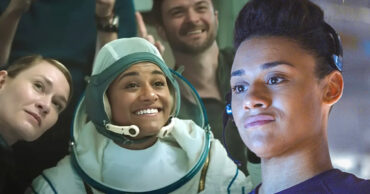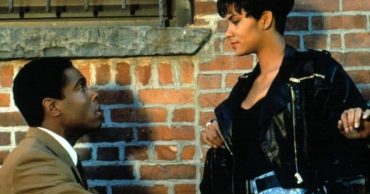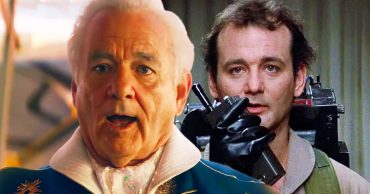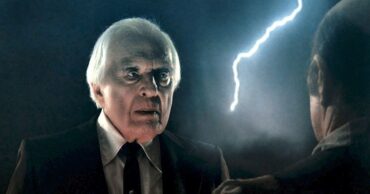The Joseph Sargent-directed Something the Lord Made is one of the underrated biographical dramas of the 2000s. HBO released the made-for-television film on May 30, 2004. Something the Lord Made was based on a true story that had little publicity when it occurred.
In retrospect, few actors like Alan Rickman and Mos Def could have delivered a compelling and believable performance. Something the Lord Made centered around the remarkable and groundbreaking surgical partnership between Dr. Alfred Blalock and Vivien Thomas. Taking a trip down memory lane, here’s a critical look at the cinematic masterpiece Something the Lord Made.
Something the Lord Made Delivers An Emotional & Electrifying Plot
The movie’s plot timeline stretches from the Depression era of 1930 to 1964. Set against the backdrop of racial segregation, the movie introduces its protagonists, Dr. Alfred Blalock (portrayed by Alan Rickman) and Vivien Thomas (Mos Def). Dr. Blalock, who was working at Vanderbilt University, hired Thomas as a janitor for his lab while acting as his assistant. Dr. Blalock is soon impressed by Thomas’s work dexterity and level of education. In addition to Thomas’s interest in Dr. Blalock’s experiments, Blalock upgrades him as a research partner.
However, things were different when Dr. Blalock moved from Nashville to John Hopkins in Baltimore, Maryland. As a prominent university in the segregation era, African Americans are only employed as janitors. Since only whites are allowed through the hospital’s front door, irrespective of Thomas’s position as Dr. Blalock’s research partner, Thomas is expected to use the back door as a black man. However, their partnership soon gets local recognition after experimenting with ways to save babies with Blue Baby Syndrome, a congenital heart defect.
Despite their success and acclaim, Thomas is not recognized for his contribution. He once quit working with Dr. Blalock after witnessing the doctor credit others for their success with the Blue Baby Syndrome without acknowledging Thomas’s indispensable contributions. However, behind the scenes, doctors from around the world visit John Hopkins to learn about Thomas’s suturing, aptly referred to as “something the Lord made” by Dr. Blalock. By the end of the movie, a day before Dr. Blalock died in 1964, he’s seem teaching in John Hopkins’s open heart surgery wing as a professional surgeon. In 1976, Thomas’s portrait was hung on the walls of John Hopkins, beside Dr. Alfred Blalock, with the inscription reading Dr. Vivien Thomas.
Something the Lord Made Effectively Mirrors Its Source Material
Something the Lord Made’s screenplay was adapted from Katie McCabe’s Washingtonian magazine article “Like Something the Lord Made.” Much of the true story was unknown internationally, except among the medical community. Thanks to McCabe’s National Magazine Award-winning article, Dr. Blalock and Vivien Thomas’s 34-year partnership received worldwide recognition. As the movie connotes, Dr. Helen Taussig (portrayed by Mary Stuart Masterson), a pediatrician/cardiologist at Johns Hopkins, challenged Dr. Blalock to help find a solution for Blue Baby Syndrome.
The surgical procedure to relieve the cyanosis from the Blue Baby Syndrome is named “Blalock–Thomas–Taussig shunt.” Until his death, Dr. Blalock dedicated his life to research on cardiac surgeries. Although the first surgery was successful, in reality, the child, Eileen Saxon, died a few months later. Dr. Alfred Blalock died on September 15, 1964, at age 65, from metastatic urothelial carcinoma of the ureter. Vivien Thomas, who was 11 years younger, died on November 26, 1985, at age 75. Dr. Vivien Thomas died from pancreatic cancer. Before he retired from John Hopkins in 1979, he was appointed as Instructor of Surgery three years earlier, on July 1, 1976.
The Movie Highlights Ethical and Moral Dilemmas
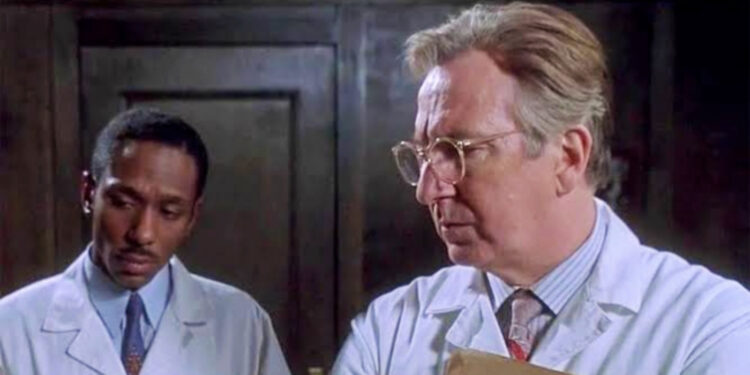
Something the Lord Made delves deep into the ethical and moral dilemmas Dr. Blalock and Vivien Thomas faced as they navigated the uncharted territory of medical innovation. The film raises thought-provoking questions about the boundaries of medical experimentation, the treatment of patients as research subjects, and the responsibility of the medical community towards marginalized individuals. These ethical and moral dilemmas force the audience to confront their own beliefs and perceptions, underscoring the enduring relevance of the film’s themes in contemporary society.
A Timeless Performance From An Eclectic Cast
Something the Lord Made may not have gotten the exposure as the 2009 biological TV drama Gifted Hands: The Ben Carson Story, but it packs a talented cast. The late English actor Alan Rickman delivers a breathtaking performance as Dr. Blalock. Rapper and actor Mos Def was also a fantastic addition to the cast to portray the amiable Vivien Thomas. Rickman not only portrayed a renowned surgeon who pushes the boundaries of medical science to save lives but showcased a believable transformation as he partnered with Vivien Thomas while recognizing and respecting Thomas’s exceptional skills despite the prevailing racial prejudices.
Mos Def portrayed his character as a self-taught surgical technician with unparalleled talent and expertise. He helped reveal the numerous obstacles Vivien Thomas faced in the segregated United States due to the color of his skin. In supporting roles, film and television actress Kyra Sedgwick played Dr. Blalock’s wife, Mary Blalock. Gabrielle Union played Vivien Thomas’s wife, Clara Thomas. Also, actress and director Mary Stuart Masterson portrayed Dr. Helen B. Taussig. Besides Something the Lord Made, the 1991 The Five Heartbeats was another cinematic masterpiece.
 Follow Us
Follow Us

